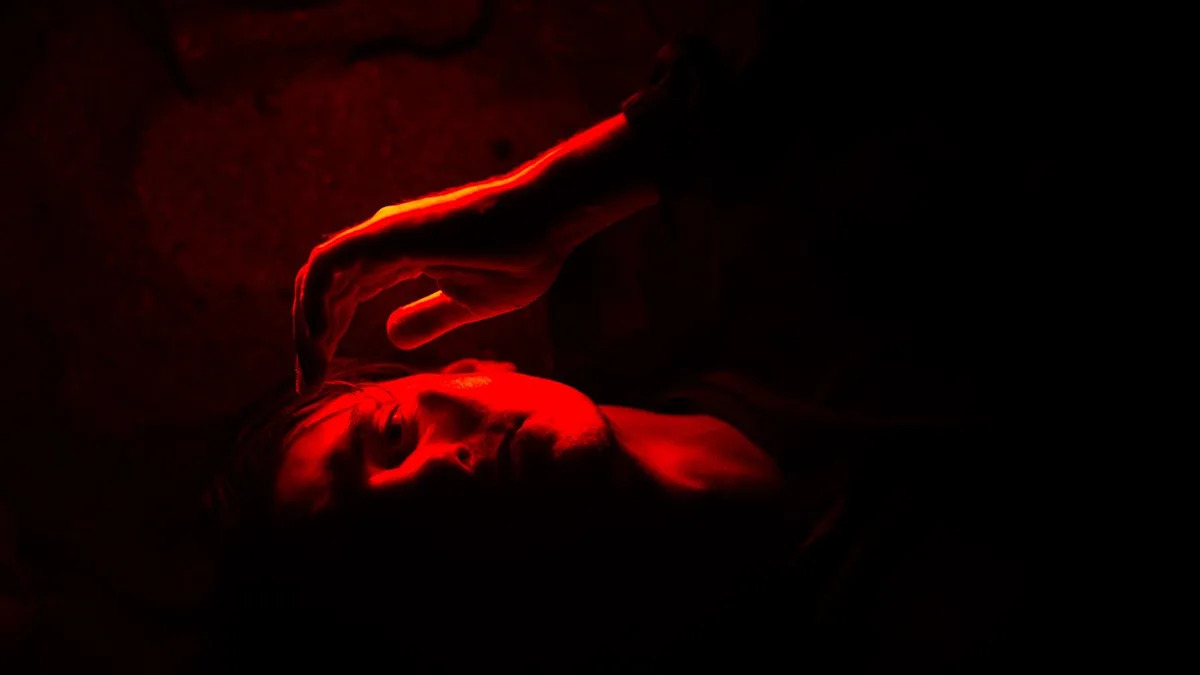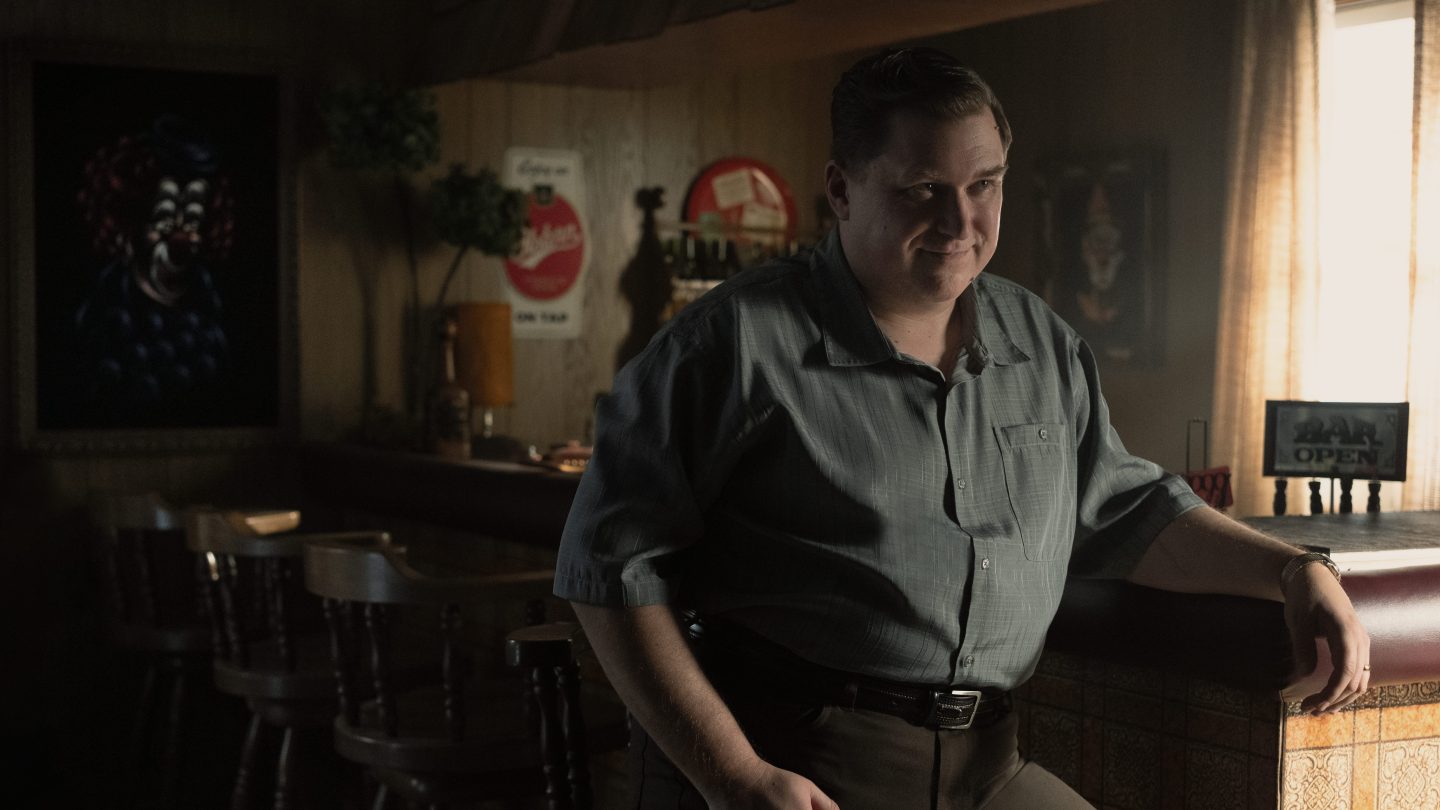Nearly six full hours into Peacock’s Devil in Disguise: John Wayne Gacy, we finally see the eponymous serial killer applying make-up and donning the clown costume that, for many viewers, is inextricably linked to Gacy’s murderous reign.
The moment is striking and also, if I’m being completely honest, corny. It’s a wild reversal from the relative subtlety of the first three-quarters of the limited series, the sort of iconographic emergence one might expect in a Superman (the first time Clark Kent removes his glasses and takes flight) or a Batman (Bruce Wayne covering his head in a black cowl).
Devil in Disguise: John Wayne Gacy
The Bottom Line
Leaves no time for clowning around.
Airdate: Thursday, October 16 (Peacock)
Cast: Michael Chernus, Gabriel Luna, James Badge Dale, Michael Angarano, Chris Sullivan, Marin Ireland
Creator: Patrick Macmanus
At home, I literally sighed and wrote, “Here comes the Monster version of the series.”
For years, across various franchises on FX and Netflix, Murphy and his collaborators have often broadly insisted that their latest serial killer opus wasn’t driven by fetishistic ghoulishness but, instead, a desire to honor the victims and/or the sociological context enabling the malevolent antihero. That desire apparently only lasts until the first opportunity to show Charlie Hunnam masturbating in frilly lingerie; from there, operatic monstrosity ensues. (Credit where it’s due: Sometimes Murphy and company have truly succeeded. The Assassination of Gianni Versace: American Crime Story suffered from comparisons to the flashier O.J. Simpson story, but it’s ultimately a much more complex and humane work.)
But Patrick Macmanus, creator of Devil in Disguise, isn’t playing that game. Our first glimpse of Gacy in full harlequin regalia is our last. No clowning mayhem ensues.
Instead of the orgiastic madhouse that fans of Monster and American Horror Story have grown accustomed to, Devil in Disguise is a somber affair, as aesthetically chilly as a December in Des Plaines, Illinois. In eight hours spent depicting one of the most prolific spree killers and sexual predators in American history, the onscreen violence is almost exclusively psychological. And although Michael Chernus gives an impressively unsettling performance in the main role, this is actually a serial killer drama in which the humanity of the victims, the challenges for law enforcement and the unfolding of a complex thesis on the genre are given equal — and eventually more than equal — time to the carnage.
Macmanus slightly overplays his hand and slightly overpopulates the show’s world. A tighter version of the story — six hours, perhaps — would be less draining, and the finale, in which Gacy is nearly absent, buries what should be its best scene. Still, I respect a serial killer drama that’s this willing to eschew exploitative shock and simple answers in favor of sadness and weariness.
Macmanus and director Larysa Kondracki hold back on introducing us to Gacy in the pilot as well. Instead, starting on December 11, 1978, we meet Elizabeth Piest (Marin Ireland, TV’s go-to for sadness and weariness), a suburban Chicago mother whose teenage son was supposed to meet a contractor about a job but never came home. She goes to the local police, where chief of detectives Joe Kozenczak (James Badge Dale) tells her, “They usually show up, kids.” That’s not enough for Elizabeth, so Joe sends Rafael Tovar (Gabriel Luna) to do rudimentary investigations that bring him to the house of simultaneously friendly and squirrelly Gacy.
Suspicion leads to interrogation. Interrogation leads to confession. Soon, the police are tearing up Gacy’s home and finding a nightmarish collection of bodies; Gacy’s attorney Sam Amirante (Michael Angarano) is trying desperately to get his loquacious client to shut up; prosecutor Bill Kunkle (Chris Sullivan) is fantasizing that the high-profile case that could lead to a judgeship; Elizabeth is wondering why still nobody can find her son; and Joe is beginning to poke around into the circumstances that allowed John Wayne Gacy to kill at least 33 young men despite previous incarceration and multiple reports of shady behavior to multiple other police departments.
Not to say that this is a show the entire family should gather together to watch, but Devil in Disguise: John Wayne Gacy keeps its content somewhat muted even when digging into queasier parts of Gacy’s biography, like the time he curled up with a dead body during his time working at a mortuary. One can only imagine the Monster version of the same scene. Generally, Devil in Disguise trusts the established facts of Gacy’s spree, favoring a rumbling low-level suspense over action. When did we decide that serial killer stories were supposed to be wild or thrilling?
Episodes tend to follow a trifurcated structure, between the police investigation, with Gacy as a central figure; the legal maneuvering, again with Gacy as a central figure; and flashbacks, some featuring Gacy at different stages in his psychopathy (or mustache-growing) and others focused on his victims, both deceased and survivors. The 1978 portions of the storytelling are methodical and procedural, at their very best calling to mind David Fincher’s work in Zodiac. The flashbacks and spotlights on the victims are never chronological, and their placement doesn’t always feel logical, but they’re the emotional heart of the series.
As was the case in Hulu’s The Girl from Plainville, Macmanus is attuned to the quiet perils of teenage life. Police and the media classified Gacy’s victims as male prostitutes and homosexuals, using that as an excuse to marginalize and blame them. But instead of fixating on how Gacy preyed on these kids, Macmanus examines the circumstances that made them vulnerable to be preyed upon.
The crawlspace at Gacy’s house, masterfully recreated by the production design team, is where the victims’ journeys ended. So instead we get earlier introductions to people like petty criminal Billy Kindred (Colton Ryan), who viewed a construction job with Gacy as a chance to go legitimate, or the mother (Sprague Grayden’s Bessie) who worries that her own anti-establishment protesting might cause her troubled son to slip through the cracks. Rather than viewing the insinuating and undeniably creepy Gacy as an inherent threat, Macmanus finds the tragedy in the disparate and desperate circumstances amid which Gacy might have represented an illusion of hope. As depicted here, Gacy is a parasite latched onto a failing society. It’s an approach that’s more interesting than the one episode that attempts to analyze Gacy’s own backstory and can’t dig much deeper than “Daddy issues.”
Episodes end with news footage and still black-and-white images of the actual victims and the media coverage. If memory serves, no photograph or footage of the real Gacy is included. Each episode also closes with a call to action for a youth support network, reminding us that with or without a Gacy, the conditions surrounding alienation remain.
As played by Chernus, Gacy is a disturbing mixture of hard and soft, sometimes icy and terrifying but frequently offering the closest thing to levity in the series. Dale, Luna and Angarano play varying shades of traumatized exhaustion, each actor delivering a performance that matches and deepens a washed-out color palette drained of joy. Thanks to the episodic flashbacks, it ends up being a rather vast ensemble, with Ted Dykstra, Jake Horowitz and Augustus Prew among the actors making the most of smaller guest parts.
By jumping forward to 1994 and Gacy’s — spoiler alert — execution, the finale is able to bring together many of the survivors and family members of the victims for what could almost be a one-act play meditating on the ethical and spiritual thorniness of the death penalty. It’s such a good opportunity to sum up the series’ themes, so it’s a little disappointing that there are only a few minutes dedicated to that conversation.
It isn’t completely effective, but it’s substantive and avoids sensationalizing one of the most sensational cases of the 20th century. I’d call it “bordering on worthwhile” in a genre too oversaturated for anything to be “necessary.” Some bloodthirsty audiences will call it “dull.”
First Appeared on
Source link












